Estás usando un navegador obsoleto. No se pueden mostrar estos u otros sitios web correctamente.
Se debe actualizar o usar un navegador alternativo.
Se debe actualizar o usar un navegador alternativo.
La Segunda Guerra Mundial en Color
- Tema iniciado Rober D
- Fecha de inicio
U-Boot

U-302 Type VIIC

U-253.Misma clase que el anterior
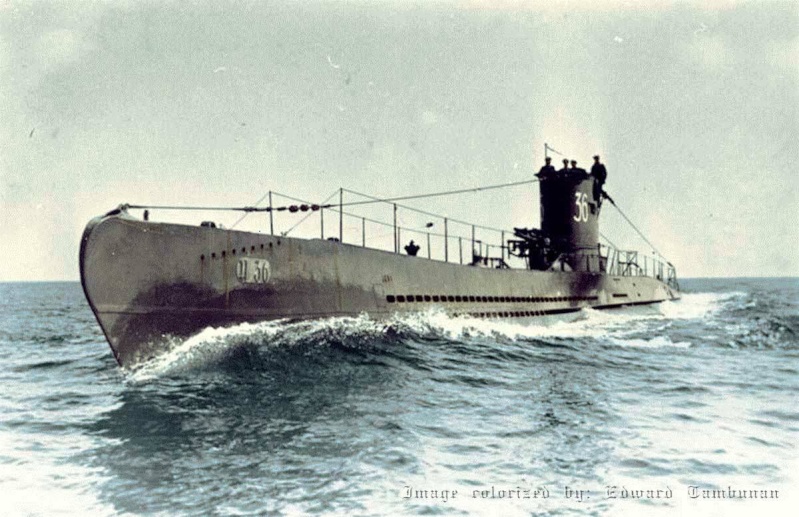
U-36 Type VIIA
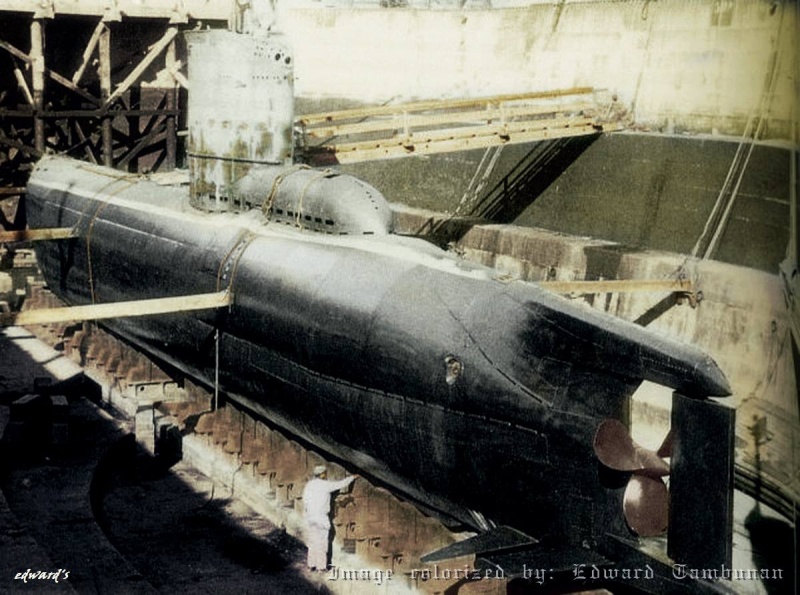
U-2326 Type XXIII
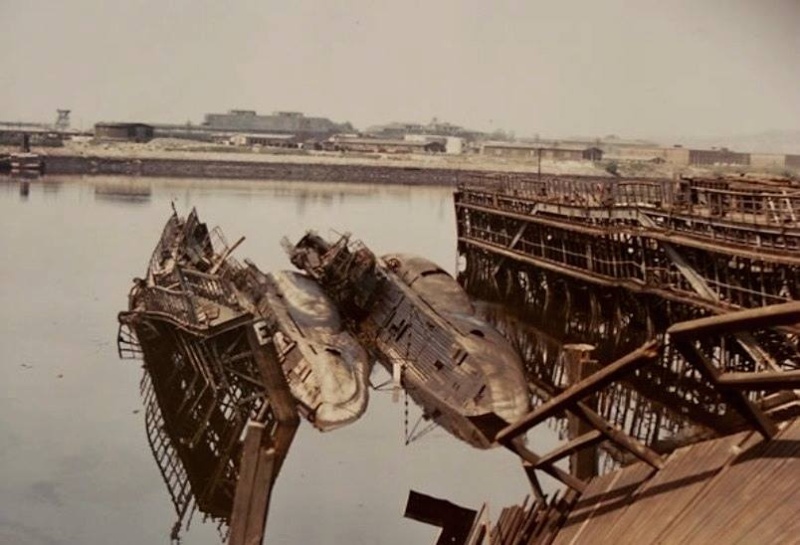
Type VII. Sin identificar.
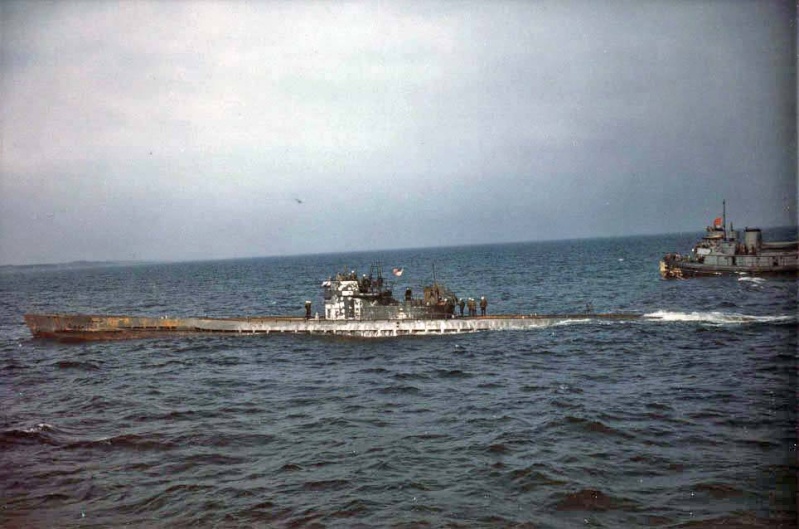
Type IX. Sin identificar. Capturado por la US Navy
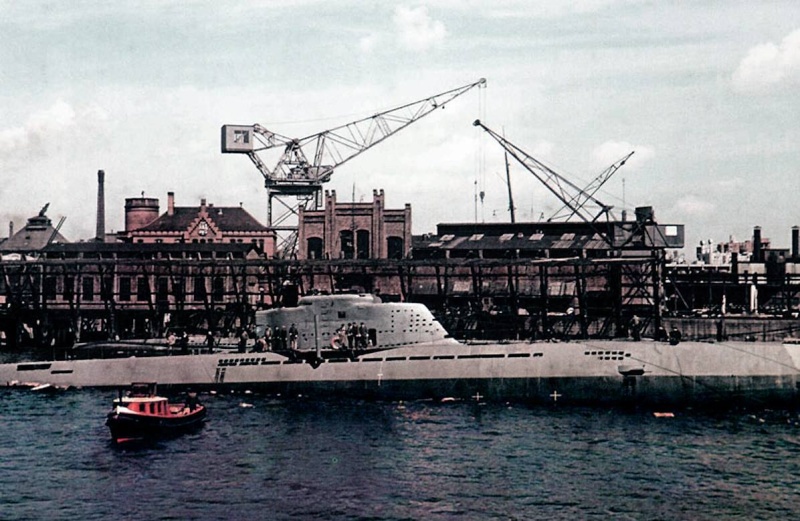
Type XXI. Sin identificar
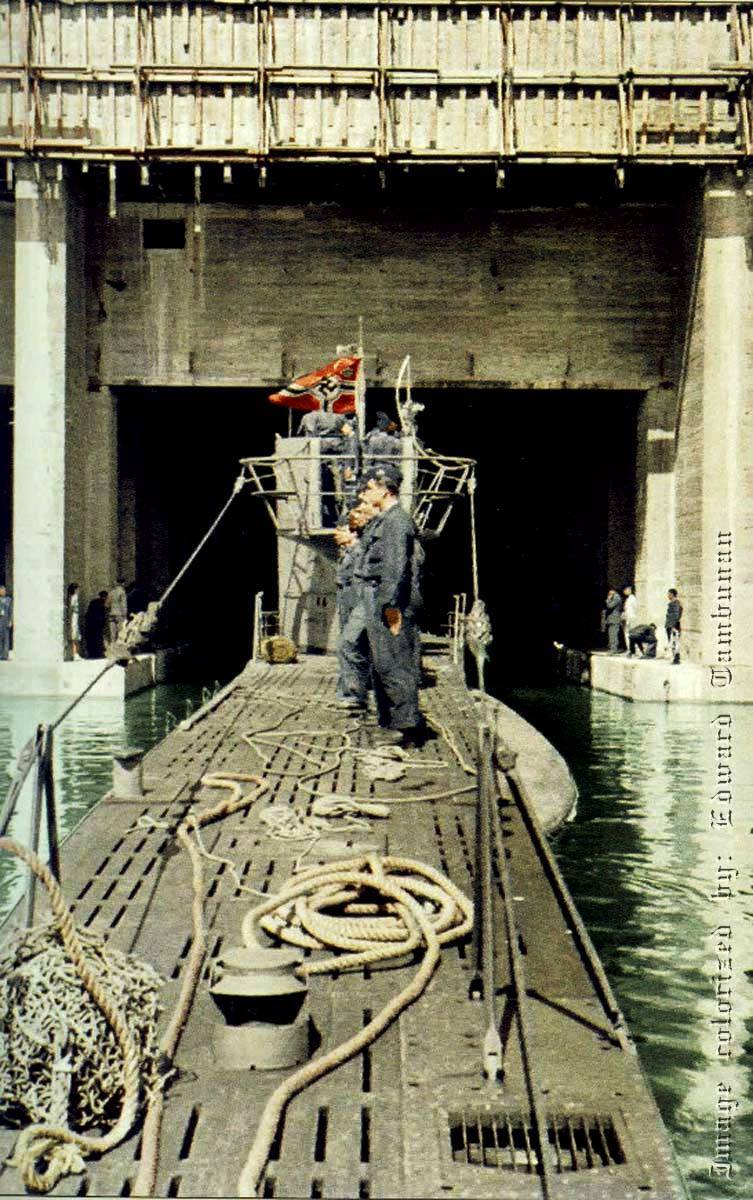
U-203 Type VIIC
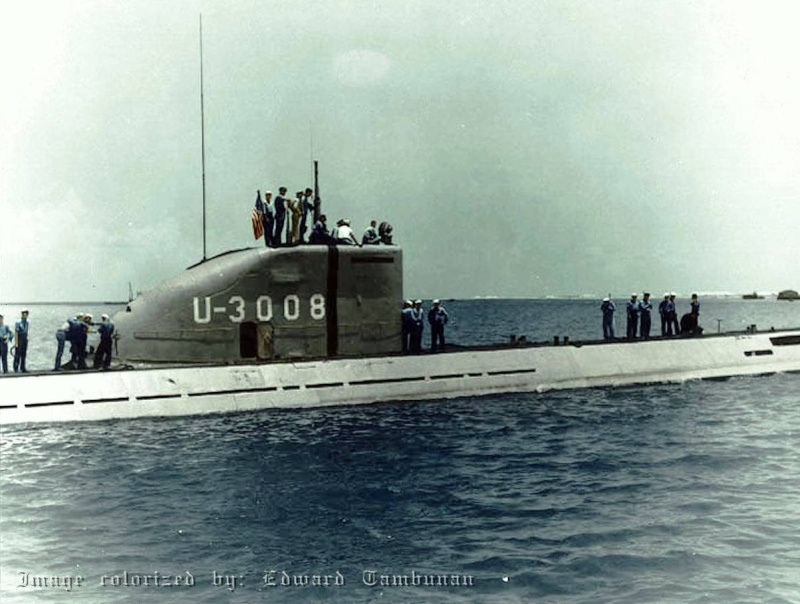
U-3008. Type XXI. Capturado y utilizado por la US Navy hasta 1948.

U-302 Type VIIC

U-253.Misma clase que el anterior

U-36 Type VIIA

U-2326 Type XXIII

Type VII. Sin identificar.

Type IX. Sin identificar. Capturado por la US Navy

Type XXI. Sin identificar

U-203 Type VIIC

U-3008. Type XXI. Capturado y utilizado por la US Navy hasta 1948.
emilioteles
Colaborador
An American Soldier from Company 'I', 2/39th US Infantry Regiment speaks to a hollow-eyed German prisoner of war. Jüngersdorf, Germany. December 12, 1944.
On December 12, 1944, the 39th Infantry Regiment, 9th ID, captured the village of Jüngersdorf, a hamlet not far from the Roer River near Dueren. A Signal Corps photographer named Robert Cravens was with 'I' Company, 39th Infantry on that day to capture scenes of the aftermath of a long and traumatic fight, the cost of which can be seen in the eyes of the men Cravens photographed.
The Battle of the Hurtgen Forest remains one of the longest, and bloodiest, battles fought by the United States Army. Through the fall of 1944, two American offensives into the hilly, heavily wooded terrain cost tens of thousands of casualties for little territorial gain. German defenders mined the forest, booby trapped entire sections, and covered all avenues of approach with snipers, automatic weapons and artillery. Attacking into the dense woods led American units to get lost, then pinned down and destroyed by German fire. Many historians have concluded that the fighting in the Hurtgen was among the most needless battles of the war, arguing that the U.S. First Army should have gone around it instead of trying to batter its way headlong through it. Altogether, the U.S. Army lost over 30,000 men; the Germans 28,000. Though most of the fighting ended in December, 1944, some firefights continued to flare up in the area until February 1945.
(Colorised by Johhny Sirlande from Belgium)

On December 12, 1944, the 39th Infantry Regiment, 9th ID, captured the village of Jüngersdorf, a hamlet not far from the Roer River near Dueren. A Signal Corps photographer named Robert Cravens was with 'I' Company, 39th Infantry on that day to capture scenes of the aftermath of a long and traumatic fight, the cost of which can be seen in the eyes of the men Cravens photographed.
The Battle of the Hurtgen Forest remains one of the longest, and bloodiest, battles fought by the United States Army. Through the fall of 1944, two American offensives into the hilly, heavily wooded terrain cost tens of thousands of casualties for little territorial gain. German defenders mined the forest, booby trapped entire sections, and covered all avenues of approach with snipers, automatic weapons and artillery. Attacking into the dense woods led American units to get lost, then pinned down and destroyed by German fire. Many historians have concluded that the fighting in the Hurtgen was among the most needless battles of the war, arguing that the U.S. First Army should have gone around it instead of trying to batter its way headlong through it. Altogether, the U.S. Army lost over 30,000 men; the Germans 28,000. Though most of the fighting ended in December, 1944, some firefights continued to flare up in the area until February 1945.
(Colorised by Johhny Sirlande from Belgium)

Sep.
Seguro que si lo agarras vos o el otro habitante del fin del mundo,le mandan GNC...
Solo porque por cuestion de costos, finalizo la era del Perkins 4.
emilioteles
Colaborador
M-36 90mm Tank Destroyer, 703rd TD Battalion, 3rd Armored Div., near Malempre, Belgium, 16 December 1944, the first day of the Battle of the Bulge.
The M36 Jackson GMC (Gun Motor Carriage) was a tank destroyer developed by first using the standard M10 chassis with a new open-top turret capable of handling a larger 90 MM M3 gun. The open-top reduced weight and allowed for better observation but like the M10 left the crew exposed to enemy fire. To offset the weight of the 90 mm gun a bustle counterweight was added to the turret rear and was capable of holding eleven rounds of ammunition. Over 1,500 M36s were produced in 3 variants.
The 703rd landed in France on the 1st of July 1944. They saw their first action near Hautes Vents on 13th of July and participated in the ''Cobra Breakout' at the end of the month.
They were held in reserve during the Mortain battle in August, crossed the River Seine on the 26th of August and reached the Siegfried Line in the vicinity of Eschweiler, Germany, by the 12th of September.
The First battalion converted to M36s at the beginning of September. Fought along West Wall until mid-December, when transferred to Ardennes after the launch of the German offensive. They fought to reduce the 'Bulge' in January 1945 and joined the drive to Cologne in February and early March, crossing the Rhine River on the 23rd of March near Honnef and participated in the envelopment of the Ruhr.
By the 14th of April they had dashed east to stop the line at Dessau.
(Source - US Army Signal Corps )

The M36 Jackson GMC (Gun Motor Carriage) was a tank destroyer developed by first using the standard M10 chassis with a new open-top turret capable of handling a larger 90 MM M3 gun. The open-top reduced weight and allowed for better observation but like the M10 left the crew exposed to enemy fire. To offset the weight of the 90 mm gun a bustle counterweight was added to the turret rear and was capable of holding eleven rounds of ammunition. Over 1,500 M36s were produced in 3 variants.
The 703rd landed in France on the 1st of July 1944. They saw their first action near Hautes Vents on 13th of July and participated in the ''Cobra Breakout' at the end of the month.
They were held in reserve during the Mortain battle in August, crossed the River Seine on the 26th of August and reached the Siegfried Line in the vicinity of Eschweiler, Germany, by the 12th of September.
The First battalion converted to M36s at the beginning of September. Fought along West Wall until mid-December, when transferred to Ardennes after the launch of the German offensive. They fought to reduce the 'Bulge' in January 1945 and joined the drive to Cologne in February and early March, crossing the Rhine River on the 23rd of March near Honnef and participated in the envelopment of the Ruhr.
By the 14th of April they had dashed east to stop the line at Dessau.
(Source - US Army Signal Corps )

emilioteles
Colaborador
This photo was taken in the Vinnitsa (Vinnytsia) area of the Ukraine in November 1943. The man at the wheel is SS-Hauptsturmführer Gustav Knittel, the commander of the 1st SS Aufklärungs-Abteilung LSSAH at the time. The number plate is 302098, and the vehicle is one of the original Porsche Vorserien Schwimmwagens assigned to the LAH in the middle of 1942.
In the background are two Panzerkampfwagen V 'Panther' Ausf.A of I.Abteilung / SS-Panzer-Regiment 1 / 1.SS-Panzer-Division LSSAH.
After the war, Knittel was convicted of War Crimes and sentenced to life imprisonment in July 1946.
In March 1948 a reviewing authority reduced his sentence to 15 years imprisonment. In May 1948 the War Crimes Review Board Nr. 4 rejected the claim that irregularities had occurred during the trial against Knittel but following the Simpson Report and the findings of the United States Senate Committee on Armed Services his sentence was further reduced to 12 years imprisonment. Knittel was released from Landsberg Prison on the 7th of December 1953 following a Christmas Amnesty.
Gustav Knittel died on the 30th of June 1976.
(Colourised by Doug)

In the background are two Panzerkampfwagen V 'Panther' Ausf.A of I.Abteilung / SS-Panzer-Regiment 1 / 1.SS-Panzer-Division LSSAH.
After the war, Knittel was convicted of War Crimes and sentenced to life imprisonment in July 1946.
In March 1948 a reviewing authority reduced his sentence to 15 years imprisonment. In May 1948 the War Crimes Review Board Nr. 4 rejected the claim that irregularities had occurred during the trial against Knittel but following the Simpson Report and the findings of the United States Senate Committee on Armed Services his sentence was further reduced to 12 years imprisonment. Knittel was released from Landsberg Prison on the 7th of December 1953 following a Christmas Amnesty.
Gustav Knittel died on the 30th of June 1976.
(Colourised by Doug)

emilioteles
Colaborador
US Navy personnel freeing a PBY-5A 'Catalina' aircraft from frozen waters in the Aleutian Islands at Kodiak Bay, US Territory of Alaska, sometime during the period between June 1942 and January 1943.
The Aleutian Islands Campaign was a struggle over the Aleutian Islands, part of the Alaska Territory, in the American theatre and the Pacific theatre of World War II starting on the 3rd of June 1942. A small Japanese force occupied the islands of Attu and Kiska, but the remoteness of the islands and the difficulties of weather and terrain meant that it took nearly a year for a far larger U.S./Canadian force to eject them.
For the next nine months the Japanese were harassed from the sea, and from the air by USAAF bombers operating from air strips specially built on two other islands, Adak and Amchitka, just 145 km. (90 mi.) and 95 km. (60 mi.) respectively from Kiska. But adverse weather conditions hindered any real attrition of the occupying Japanese and it was not until March 1943 that sufficient Allied forces became available to drive them from American soil.
The weather made American air support unreliable as Rear-Admiral Charles McMorris discovered when it failed to arrive after he encountered Hosogaya's more powerful force on the 26th of March 1943. However, the battle of the Komandorski Islands which followed prevented the 2,630-strong Japanese garrison on Attu from receiving any further infantry reinforcements before 11,000 men of the 7th US Infantry Division landed there on the 11th of May 1943 with the support of a battleship bombardment and, for the first time in the Pacific war, with air support supplied by an escort carrier. The Japanese, commanded by Colonel Yamazaki Yasuyo, resisted stubbornly and on the 16th of May the commanding US General was dismissed when he remarked that it would need six months to conquer the island.
But Yamazaki and his men, outnumbered and poorly supported from the air and sea, were gradually pushed into the last high ground. Then, before dawn on the 29th of May, they launched one of the biggest banzai charges of the war which overran two command posts and a medical station before being halted. The battle went on all day and the next morning the surviving Japanese made a final attack before most of the survivors committed suicide. Only 28 prisoners were taken and 2,351 bodies were counted. The Americans lost 600 killed and 1,200 wounded.
Vice-Admiral Thomas Kinkaid, who had succeeded Rear Admiral Theobald in January 1943, now turned his attention to Kiska. He imposed a destroyer blockade and ordered intensified air and sea attacks on the garrison. However, by then the Japanese had decided to evacuate the island and on the night of 28/29th of July, while US naval patrol ships were refuelling after the ‘Battle of the Pips’, the Japanese Navy expertly evacuated 5,183 troops and civilians under cover of fog. Air reconnaissance failed to establish that Kiska was no longer occupied and as ground fire was reported on several occasions it was suspected that the Japanese might be hiding. So on the 15th of August 1943 a force of 34,000 US and Canadian troops landed, but it took them some days to discover the Japanese had departed. In doing so 56 men were killed or wounded when friendly patrols fired on one another.

The Aleutian Islands Campaign was a struggle over the Aleutian Islands, part of the Alaska Territory, in the American theatre and the Pacific theatre of World War II starting on the 3rd of June 1942. A small Japanese force occupied the islands of Attu and Kiska, but the remoteness of the islands and the difficulties of weather and terrain meant that it took nearly a year for a far larger U.S./Canadian force to eject them.
For the next nine months the Japanese were harassed from the sea, and from the air by USAAF bombers operating from air strips specially built on two other islands, Adak and Amchitka, just 145 km. (90 mi.) and 95 km. (60 mi.) respectively from Kiska. But adverse weather conditions hindered any real attrition of the occupying Japanese and it was not until March 1943 that sufficient Allied forces became available to drive them from American soil.
The weather made American air support unreliable as Rear-Admiral Charles McMorris discovered when it failed to arrive after he encountered Hosogaya's more powerful force on the 26th of March 1943. However, the battle of the Komandorski Islands which followed prevented the 2,630-strong Japanese garrison on Attu from receiving any further infantry reinforcements before 11,000 men of the 7th US Infantry Division landed there on the 11th of May 1943 with the support of a battleship bombardment and, for the first time in the Pacific war, with air support supplied by an escort carrier. The Japanese, commanded by Colonel Yamazaki Yasuyo, resisted stubbornly and on the 16th of May the commanding US General was dismissed when he remarked that it would need six months to conquer the island.
But Yamazaki and his men, outnumbered and poorly supported from the air and sea, were gradually pushed into the last high ground. Then, before dawn on the 29th of May, they launched one of the biggest banzai charges of the war which overran two command posts and a medical station before being halted. The battle went on all day and the next morning the surviving Japanese made a final attack before most of the survivors committed suicide. Only 28 prisoners were taken and 2,351 bodies were counted. The Americans lost 600 killed and 1,200 wounded.
Vice-Admiral Thomas Kinkaid, who had succeeded Rear Admiral Theobald in January 1943, now turned his attention to Kiska. He imposed a destroyer blockade and ordered intensified air and sea attacks on the garrison. However, by then the Japanese had decided to evacuate the island and on the night of 28/29th of July, while US naval patrol ships were refuelling after the ‘Battle of the Pips’, the Japanese Navy expertly evacuated 5,183 troops and civilians under cover of fog. Air reconnaissance failed to establish that Kiska was no longer occupied and as ground fire was reported on several occasions it was suspected that the Japanese might be hiding. So on the 15th of August 1943 a force of 34,000 US and Canadian troops landed, but it took them some days to discover the Japanese had departed. In doing so 56 men were killed or wounded when friendly patrols fired on one another.

Temas similares
- Respuestas
- 99
- Visitas
- 8K
- Respuestas
- 60
- Visitas
- 12K
- Respuestas
- 203
- Visitas
- 21K

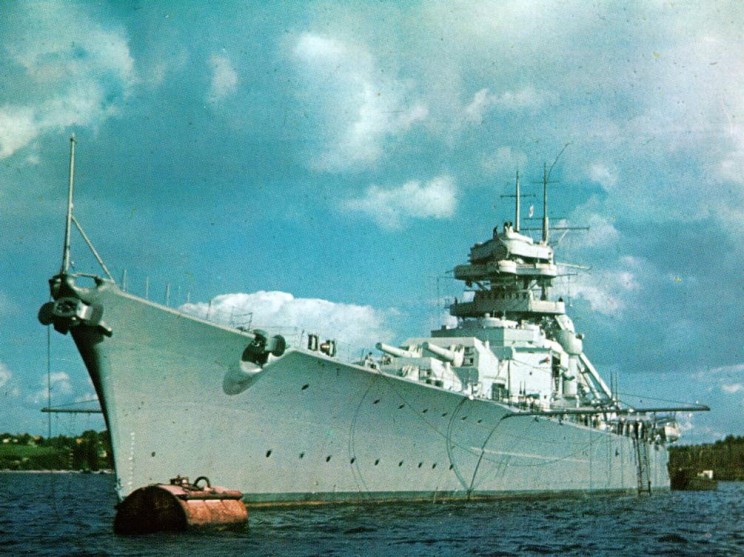



.jpg)
.jpg)
.jpg)
.jpg)












.jpg)
.jpg)